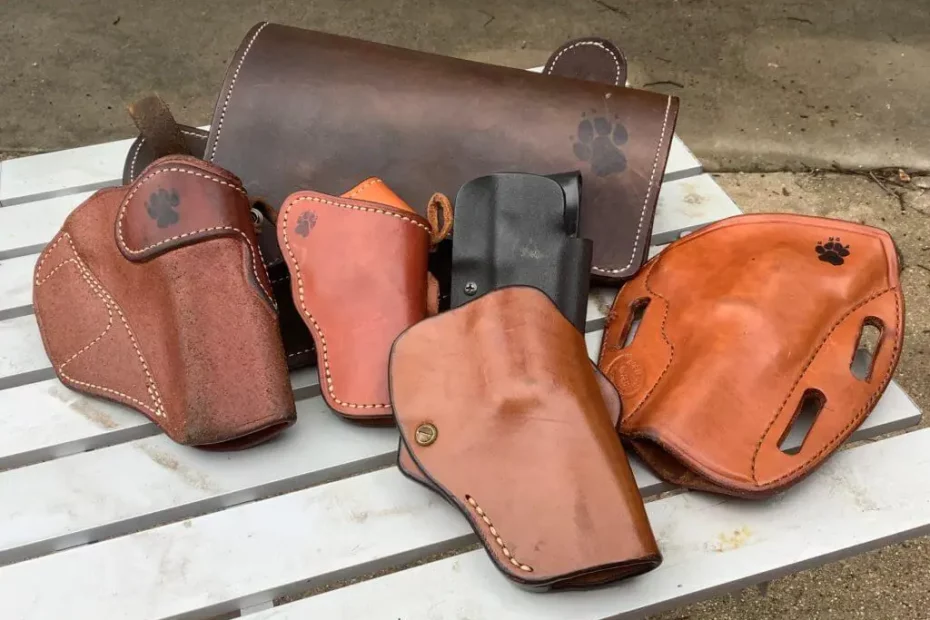Estimated reading time: 17 minutes
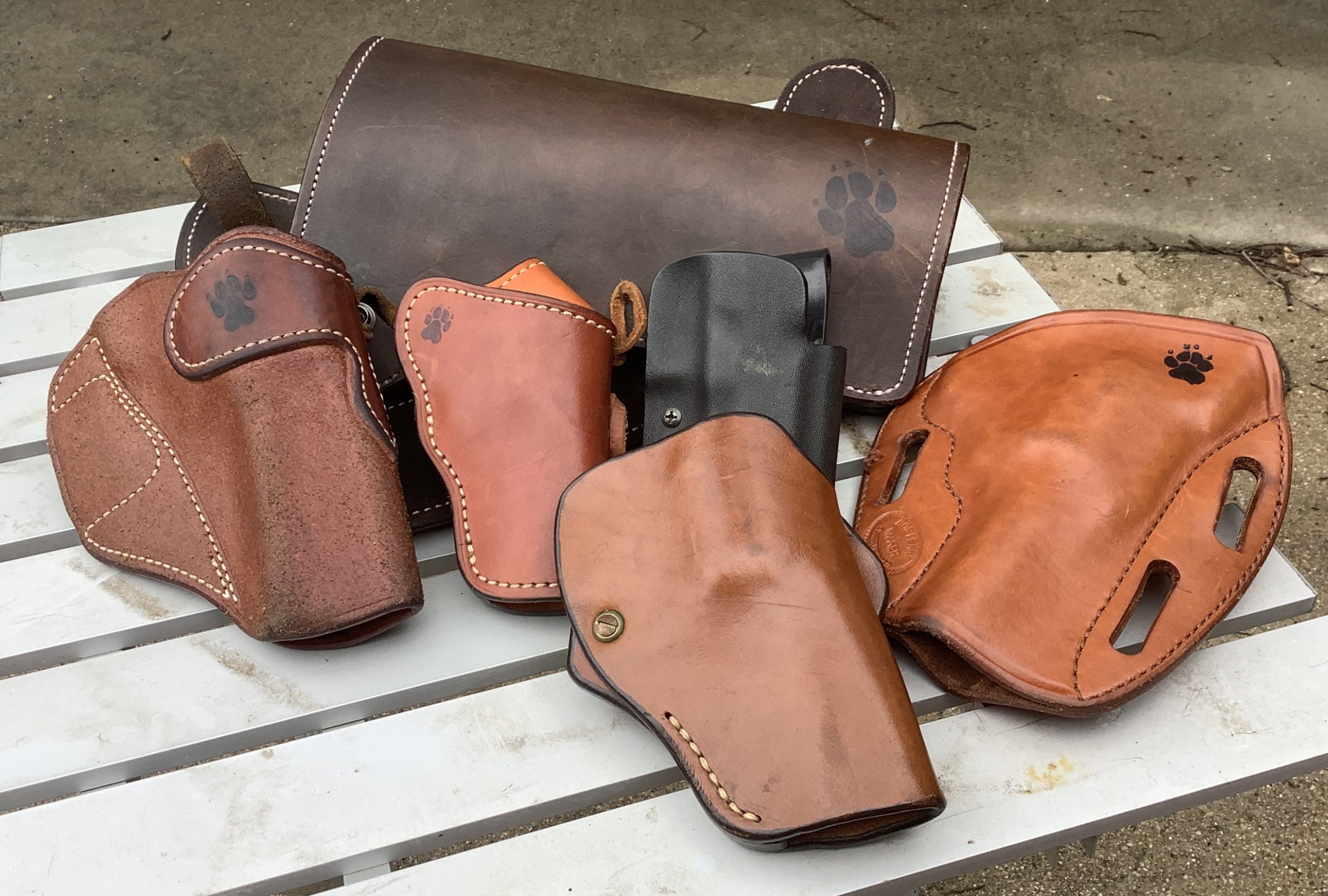
Holsters for field use can range from chest rigs and hybrid shoulder holsters to belt rigs. The decision to use something depends on what exactly your personal use will be. Will you be hunting with a handgun as your primary gun? Will you be carrying a handgun for other purposes? On the topic of other purposes, will you be carrying a coup de grace gun? A gun for taking small game for the pot. Will you carry for defense from humans or defense from dangerous game?? All of these reasons can require a different type of carry for the handgun.
Table of contents
- Holster Cant
- Belt Loop Size
- Retention Is An Important Thing To Notice
- Pick The Purpose of Your Holster
- What Am I Looking For?
- Holsters For Short-Barreled Guns
- Holster Styles I Prefer
- For Five-Inch Guns Or Longer
- Crossdraw Holsters
- Holster With A Pack
- Bandoleer Vs Chest Rig
- Bandoleer – A Favorite for longer barrels
- A Good Experience
- Links
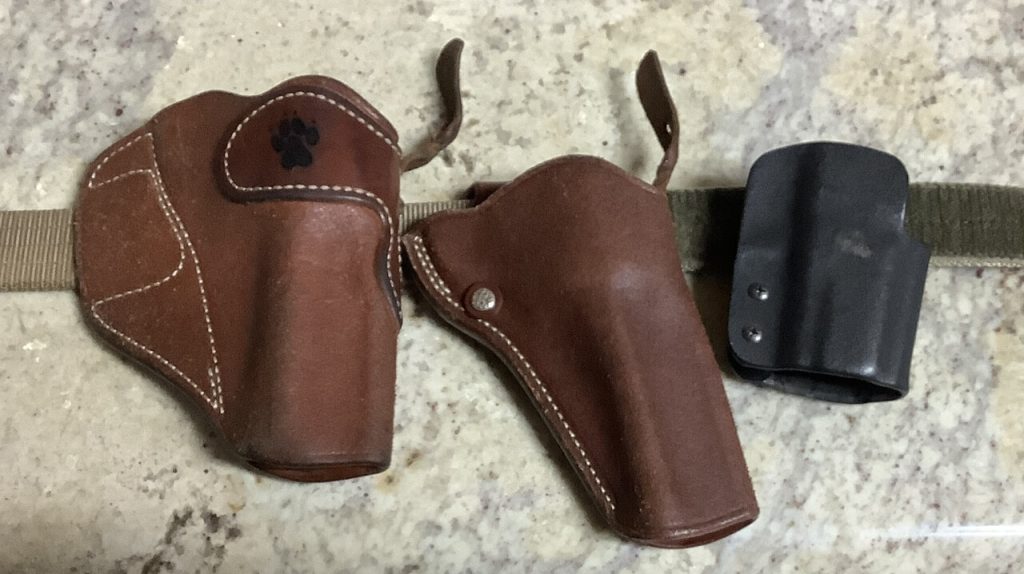
Holster Cant
Let’s get through some of the technical aspects first and the reasoning for them. Strong side holsters will come with some form of cant to them. When worn on the belt they will tilt either muzzle forward, muzzle to the rear, or straight drop. Most that you would buy off the rack seem to come in the muzzle rearward orientation (FBI cant). When ordering a custom holster, cant is one of the specifications needed. My preference is toward straight drop, which is just as the name implies no muzzle cant in either direction. Each position has its pluses and its minuses I would recommend trying each if you get a chance.
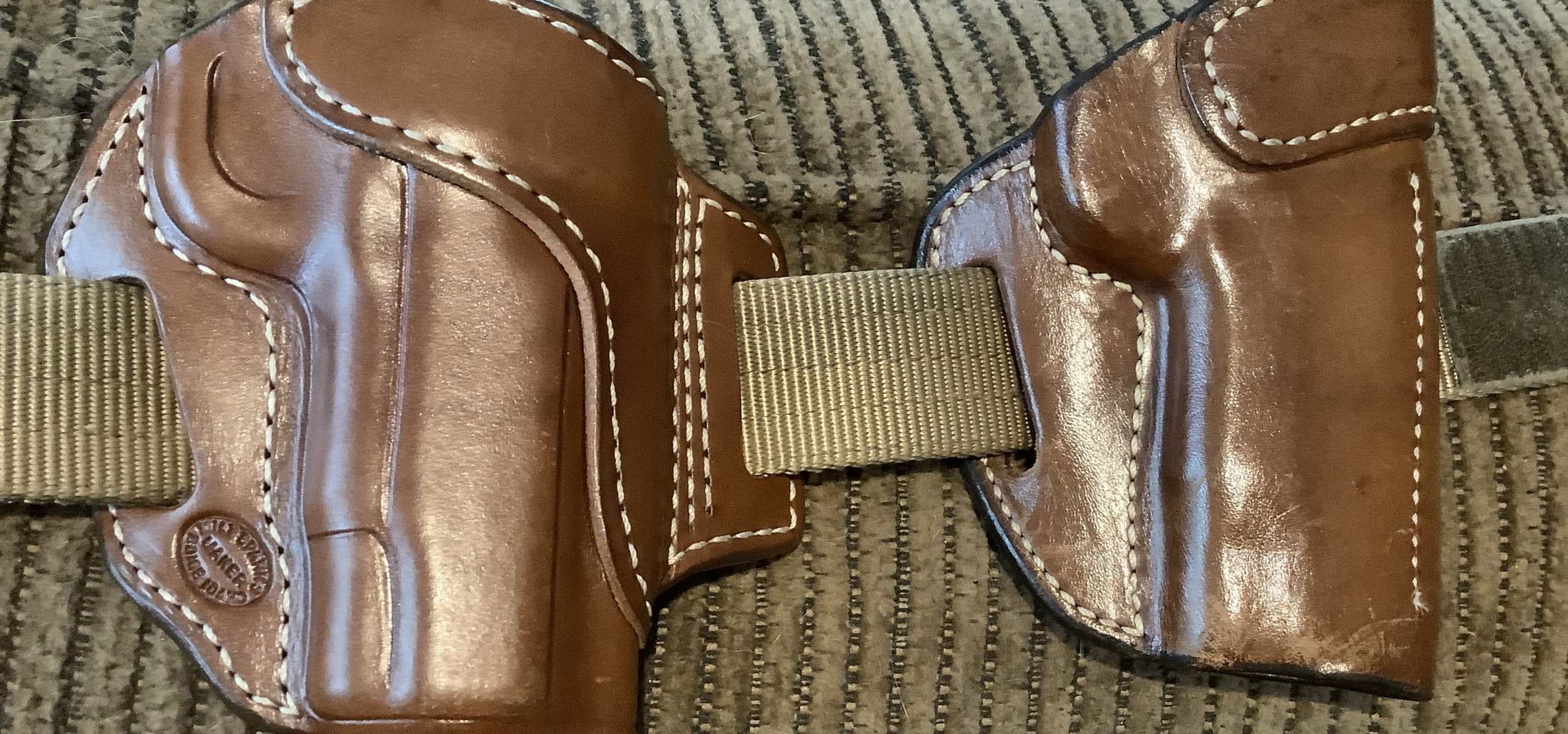
Belt Loop Size
Another important feature is belt loop size. I realized how important proper sizing between belt and holster was when I used a 1.75” belt loop holster with a 1.5” belt. A holster for a gun that wore a small reflex sight is what I needed. I purchased a decent one that was a standard production holster. That holster would flop around and pitch back and forth on the belt. I changed to a proper 1.75” belt just for that holster. Then it became a very comfortable holster to wear all day. So do not discount matching up the proper belt and holster loop size. A proper stiff belt is required too, in order to apply the necessary retention.
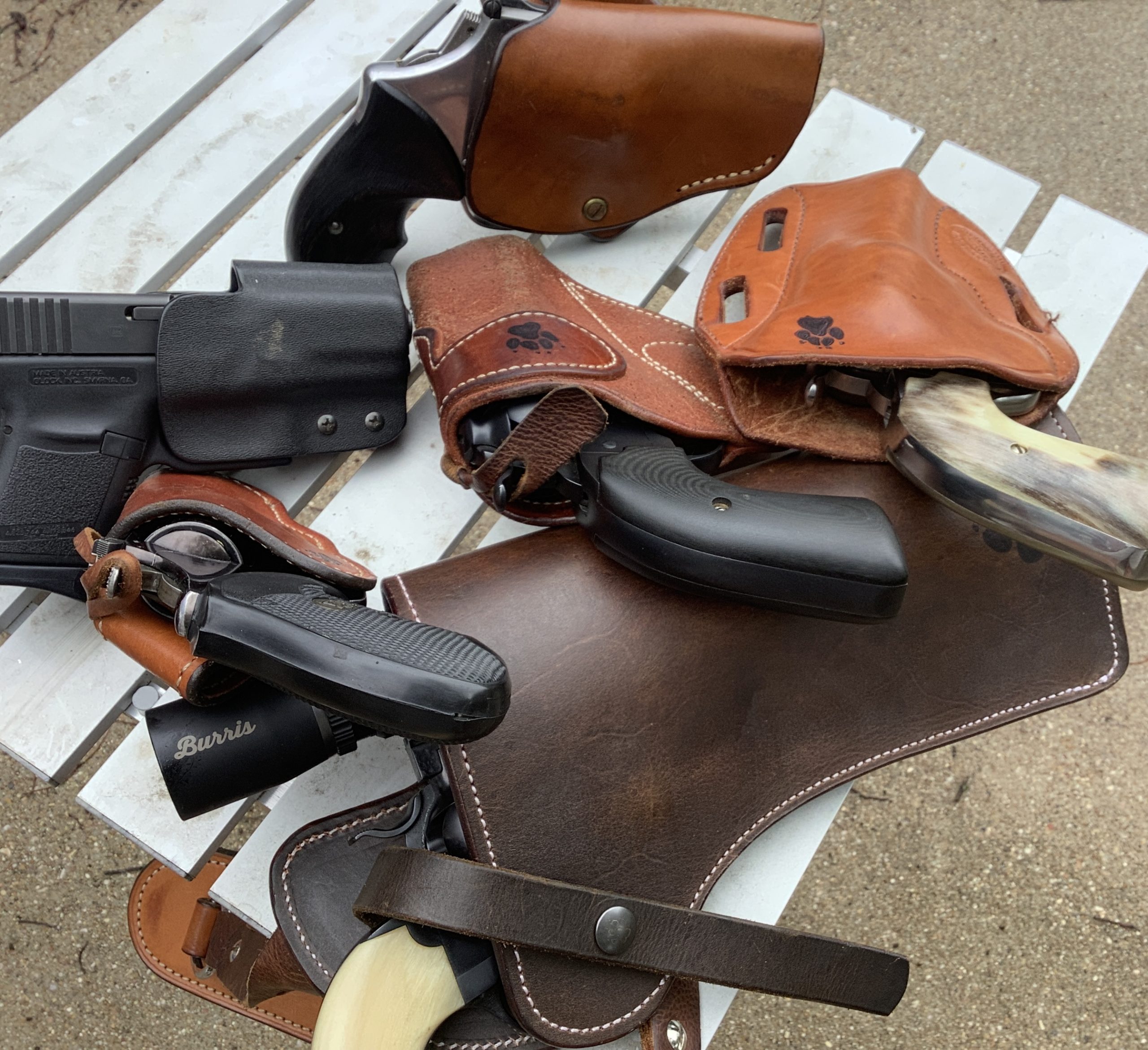
Retention Is An Important Thing To Notice
The whole purpose of using a holster is to carry and retain a handgun for use when needed. Some form of retention must be applied other than just gravity. Whether it is active retention in the form of a strap, hammer loop, or gun flap. It could also be passive retention. In the form of friction by squeezing the gun, an adjustable welt, or utilizing form fitting to help retain it.
Most holsters meant for concealed carry utilize a passive form of restraint. Simply grabbing the gun and pulling will allow removal. Use of these types of holsters in the field can result in a lost gun if you’re not careful. Practicing with the removal of the active restraint can result in a fairly rapid draw if you require one. The restraint also aids greatly in keeping your gun on you.
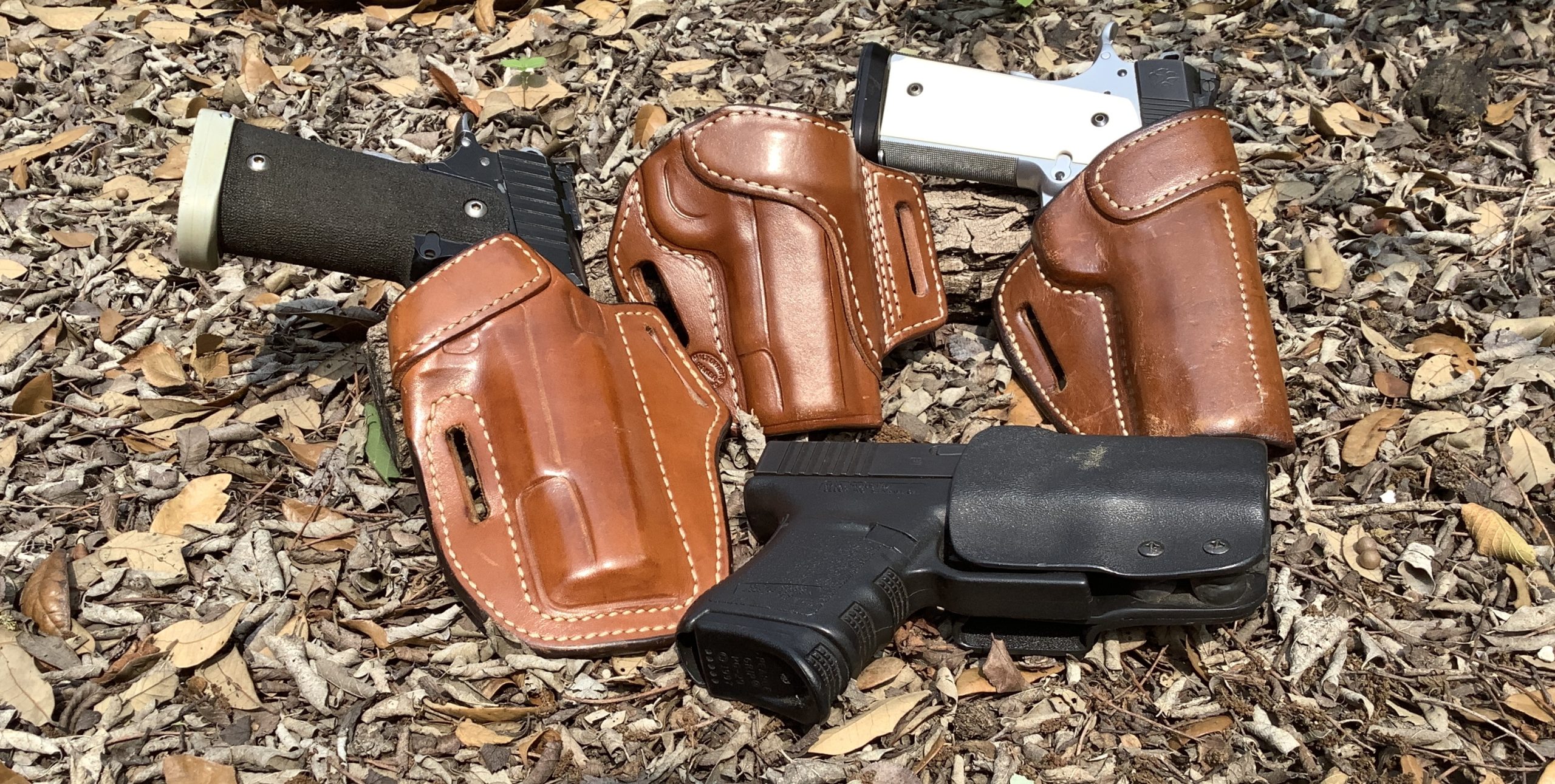
Pick The Purpose of Your Holster
I have carried a handgun for almost every purpose mentioned. There are times I have carried concealed while hunting for purposes of defense against other humans. Living and hunting in South Texas can put you in close proximity to illegal traffickers of drugs and humans. Hunting alone along our southern border brings special circumstances, especially in Texas, New Mexico, and Arizona. The holsters used for that purpose are similar to what one would use for personal concealed carry. In this type of scenario, my favorites are Strongside carry with an outside-the-pants Milt Sparks BN55 or 60TK, or Bladetech Kydex holster normally for use with an autoloader.

What Am I Looking For?
If my only concern in carrying a backup handgun is with animals, then my normal carry gun is likely going to be a revolver. I say likely because depending on where I am, it could be an autoloader of a suitable caliber or a revolver. I have carried a 1911 Commander in 38 Super or 45acp for field use. However, utilizing shotshells in an auto can be impractical.
The aforementioned holsters work well for general field purposes, but for revolver use, I have others that work well also. Since I spend considerable time sitting in vehicles driving ranch roads, I will also carry a cross-draw type holster for use with a revolver. A cross-draw holster allows comfortable sitting even when using a longer-barreled revolver. Most of the revolvers I carry for field use tend to have barrels of 5” or less. If I’m hunting with one as my primary gun then it will likely have a longer barrel.
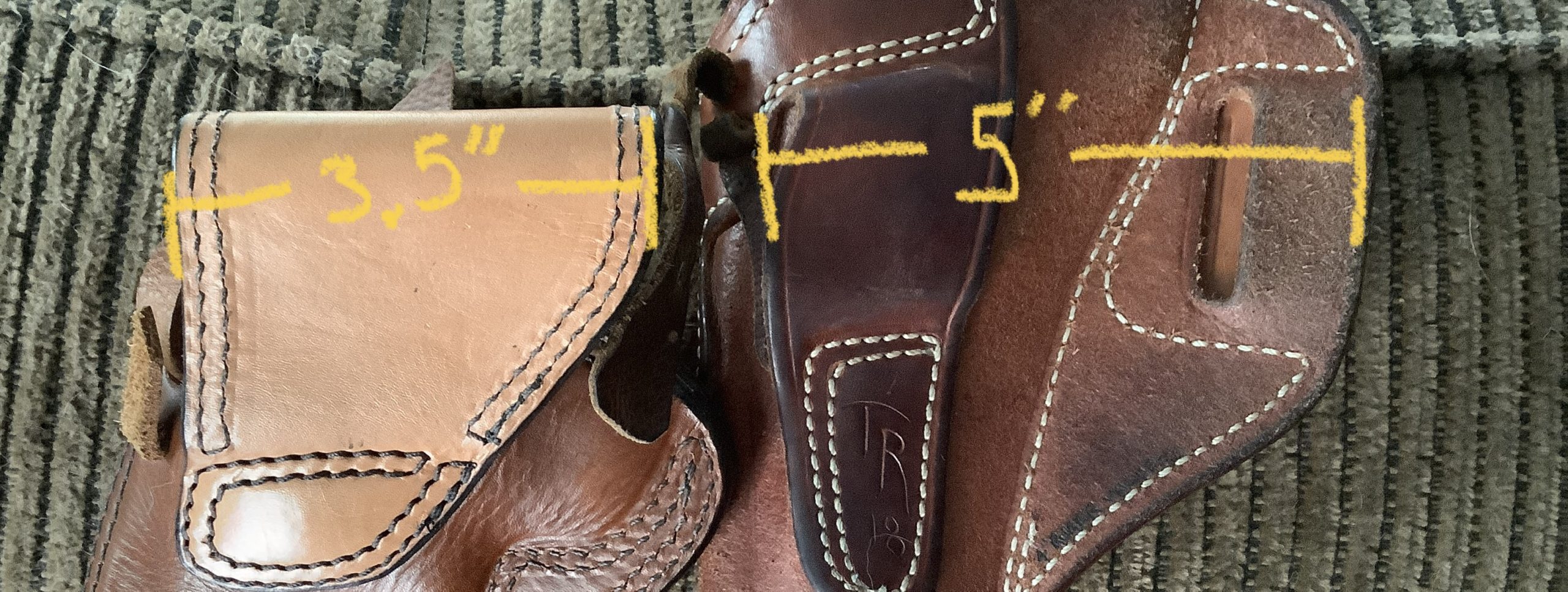
Holsters For Short-Barreled Guns
I’ll cover general-purpose and backup handgun use first. The shorter barreled guns provide more than enough accuracy for use out to 75 or 85 yards, which I find as my maximum range for iron sight use. I much prefer a holster to hold the handgun firmly to the body so that it moves with the torso.
Carried this way I find it becomes unknown to the wearer that a handgun is attached to the belt. I detest a handgun that flops about on the belt or moves around while attached at the hip. Because of this, I prefer a holster with two belt loops spaced as wide apart as possible on the holster. As mentioned before, It is important to have the belt loops match the size belt you will be wearing.

Holster Styles I Prefer
I like the same basic style holster used for concealment for GP field use, with the addition of active restraint. A strong side holster with wide-spaced belt loops is my favorite basic shape. My favorite for larger heavier revolvers is a Thad Rybka Strongside patterned after his crossdraw holster. Sadly, Thad is no longer taking orders and is pretty much retired. I have used this holster to carry my 500L Ruger/Huntington 4” barreled revolver on hunts covering 10-16 miles a day while wearing a pack. I have another identical one used with a 5.5” barreled Ruger. The holster wears on the body so well that I do not notice I’m carrying the gun.

Another style of holster that I am just getting some use from is by Barranti Leather. Doc Barranti calls it his Longhorn Companion. A unique holster that slides under a leather strap attached to the belt. The holster is retained by friction from the belt. A strap also doubles as a holster and weapon retention. My favorite feature of the holster is its easy removal and replacement. Another benefit is it rides high on the belt. Allowing longer barrels to be carried with the same ease as shorter barrels.
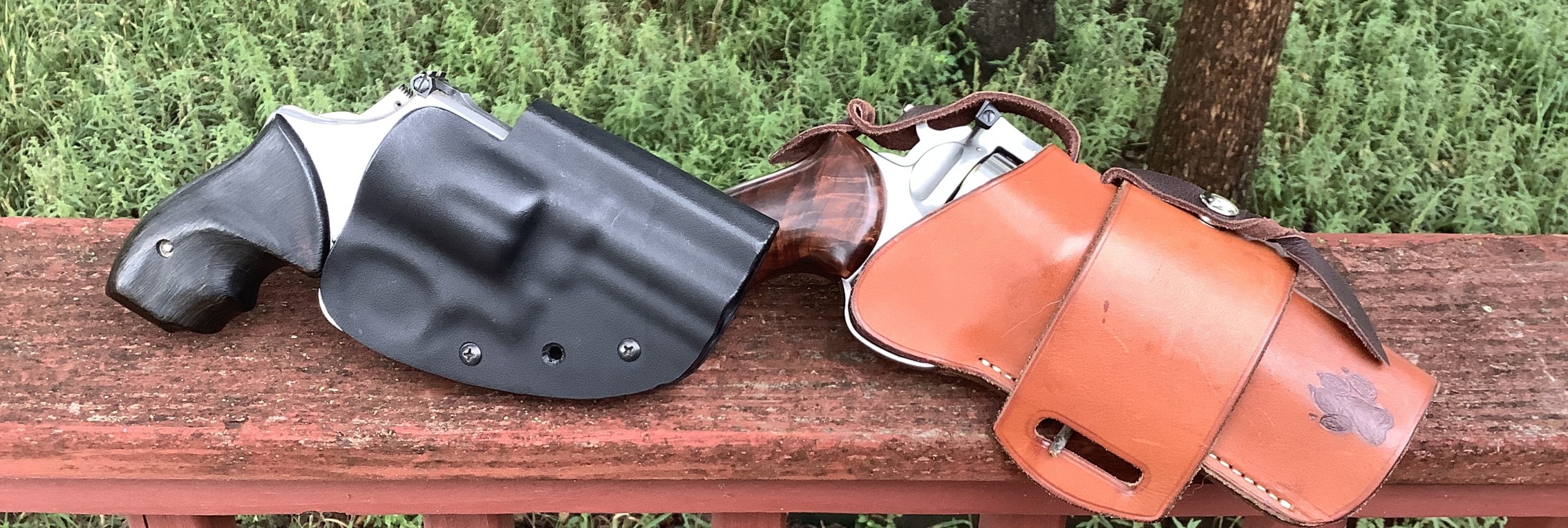
For Five-Inch Guns Or Longer
I like this style of holster for my 5” and 5.5” barreled guns because of its high-riding feature. If I am carrying out west where the possibility of dangerous animals is prevalent. I will insist on using a holster with some form of active retention, either a strap or hammer loop. I do not want a handgun coming loose and separating itself from me in the event of a fall or tussle. I’ve had it happen to me.
It is something you really don’t want especially if you are frequenting Bear Country and it’s your only firearm. I carry a custom 5” Bowen 500L Ruger SRH or 5.5” Forkin 5 shot 45colt in my Longhorn Companions.
For those of you who prefer no active retention for a field holster. Bladetech makes Kydex holsters that have gotten use from me with no issues. I carry my 3” 629 in it and tightening the retention screws down provides ample security, although I would prefer a strap or hammer loop.
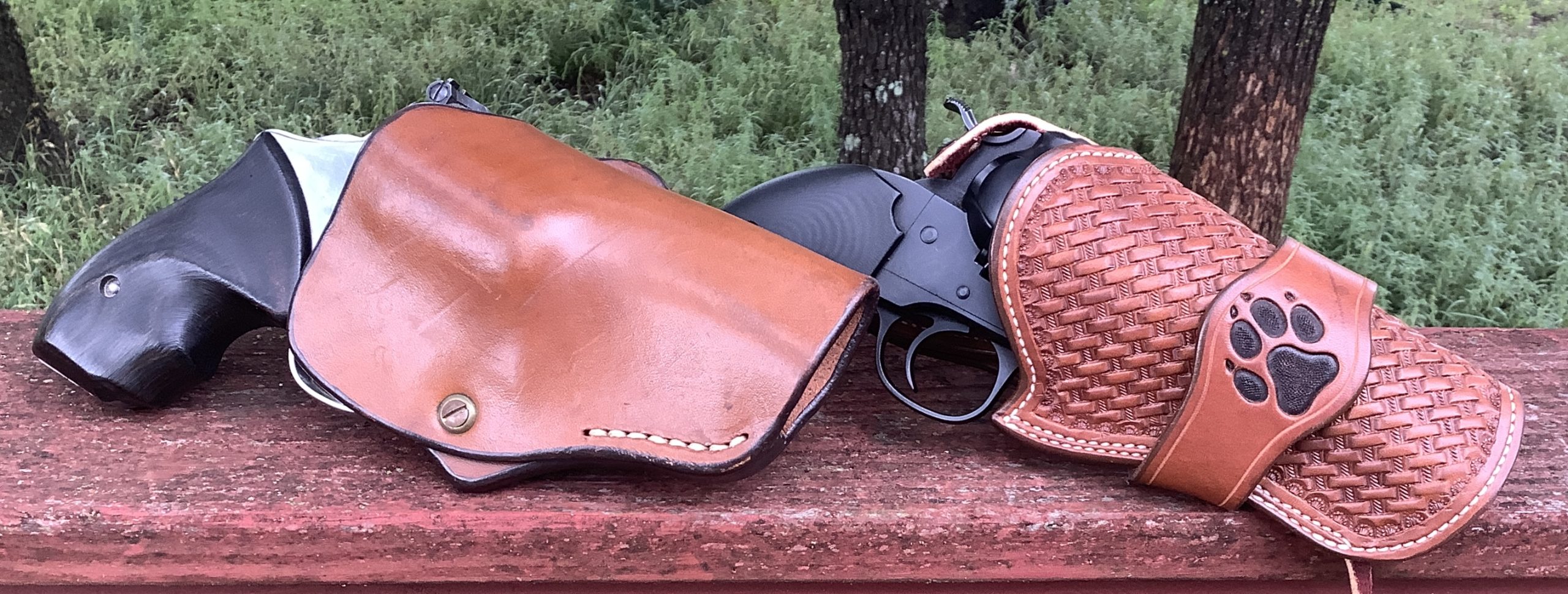
Crossdraw Holsters
If I decide to use a cross-draw holster, either due to riding a horse or some other reason. I like one made by Bullard Leather of Azle, TX. They call it their cowboy cross-draw. It carries at an extreme angle compared to most crossdraw style holsters. The holster is a well-formed holster with a hammer loop to help retain the gun.
Another favorite crossdraw is made by Milt Sparks for my 3” barreled 629, the HSR. It uses an adjustable welt for retention, so it is possible for the gun to become dislodged if rough activity has occurred. Active retention could be utilized if ordered that way. The main drawback of crossdraw holsters is their general inability to pull the gun in firmly to the torso. Some makers do offer wide belt loops for their crossdraw holsters, which I prefer.
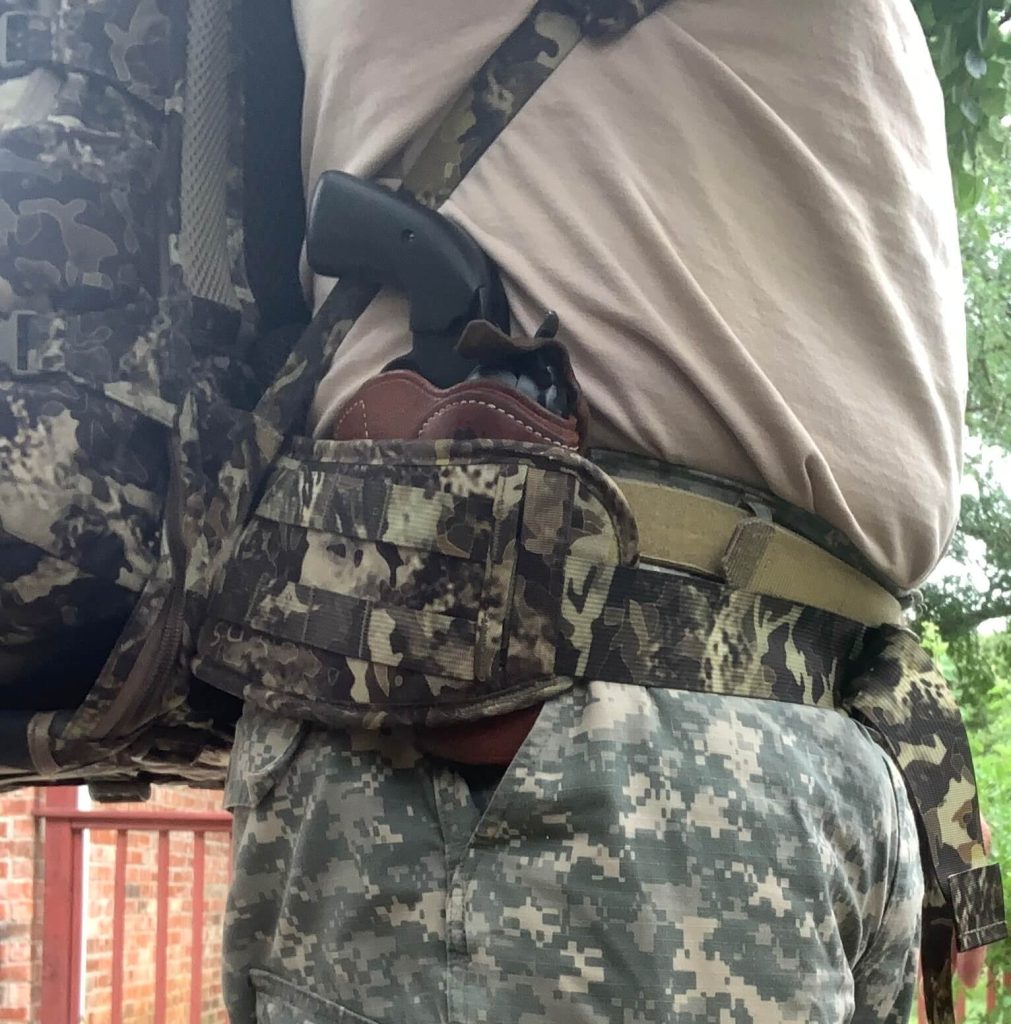
Holster With A Pack
Wearing a pack can create special issues for handgun carrying and comfort. Some holster makers have made holsters suitable for use on the pack belt. The holster is worn on the pack instead of the pants belt. This sounds like a viable alternative, and I considered it myself at one time. However, there are many times when I remove my pack and set it down to rest while hunting. If I were cutting up an animal I would definitely remove the pack while performing this task. This could potentially place me yards away from my backup or defensive gun. This has gotten people killed when bears sneak in for a free meal. I much prefer my defensive gun attached to me at all times.
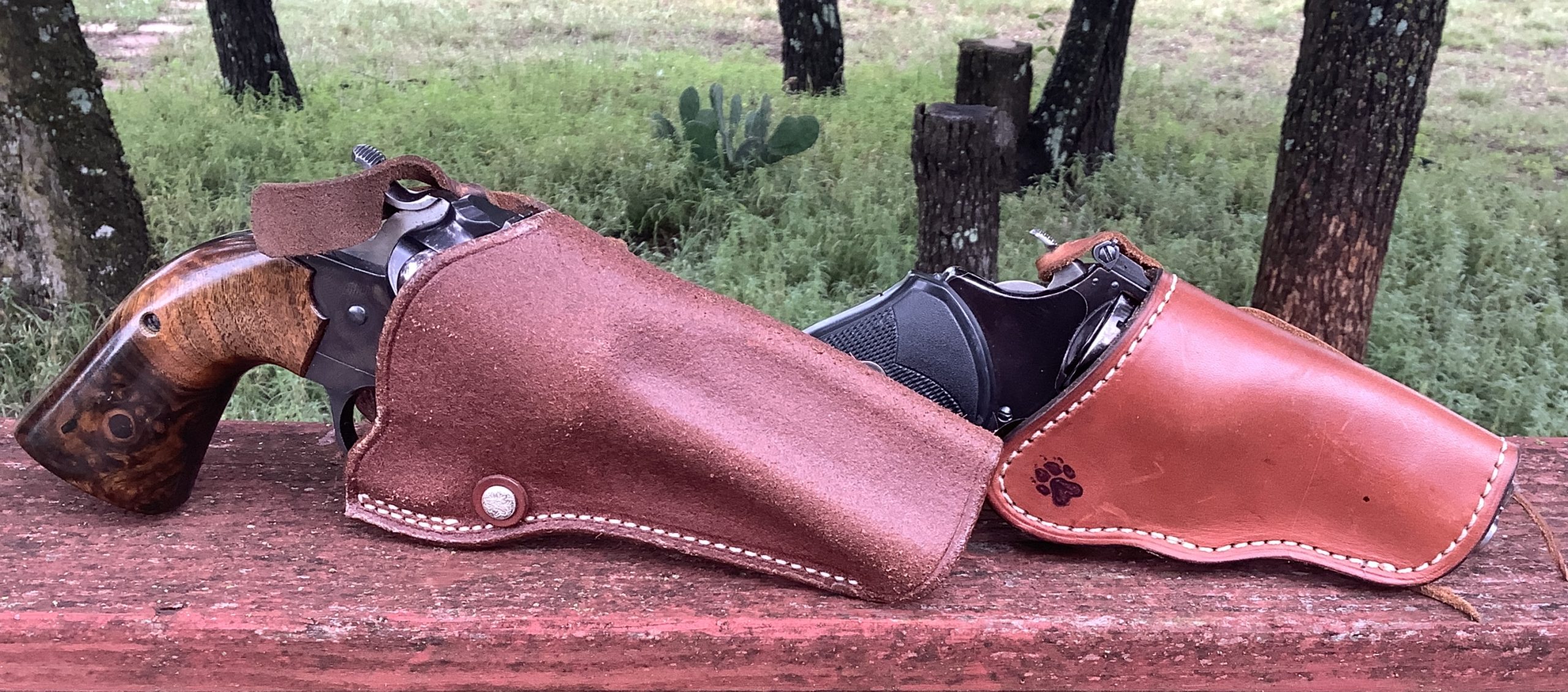
The holsters and guns mentioned so far have been more defensive and large caliber-oriented. There are definitely times when I will carry a small caliber handgun, either for coup de grace or for small game use. My most carried handgun for those purposes is an old air weight S&W 43 or a 4.5” barreled Ruger Single Six. Using a Barranti Leather NW Mountain Companion crossdraw holster for the S&W, it carries completely unnoticed while hunting the backcountry. I have used it for cottontails, grouse, and coyotes while hunting elk and mule deer. The Ruger Single Six is carried in a Thad Rybka crossdraw holster.
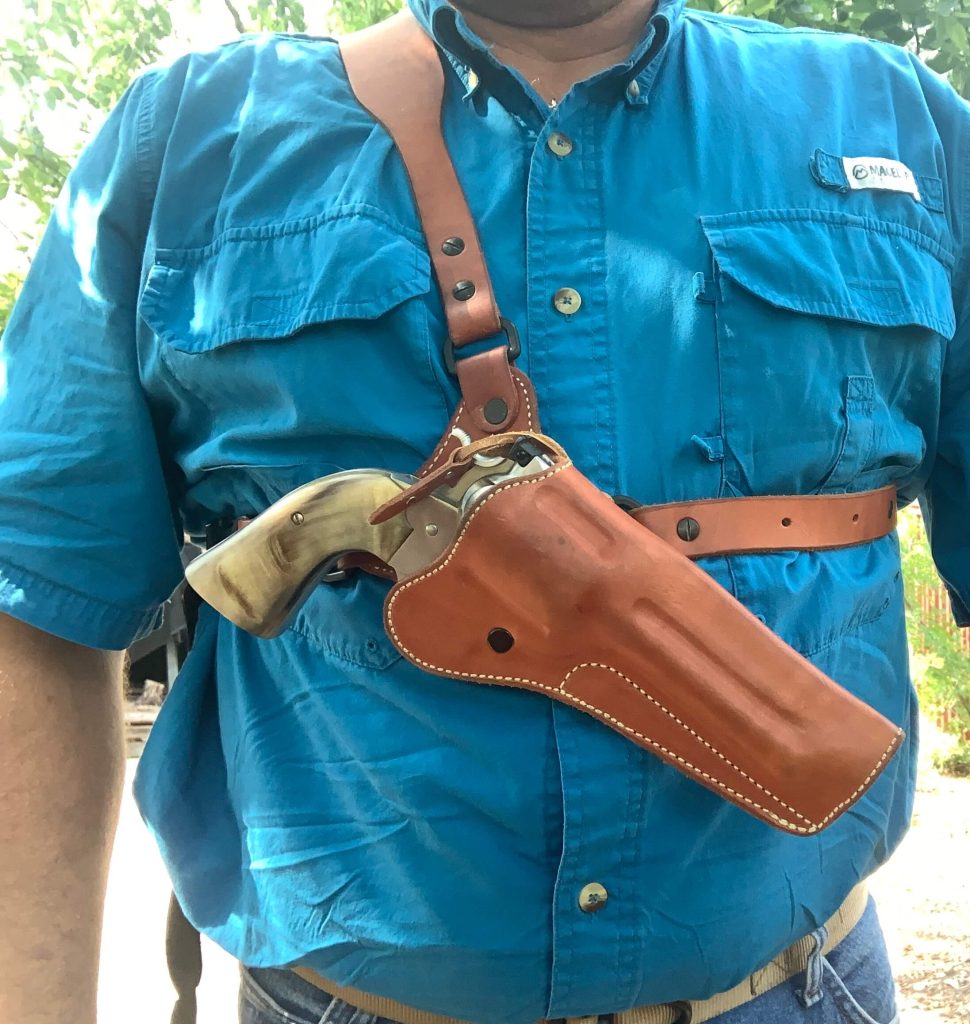
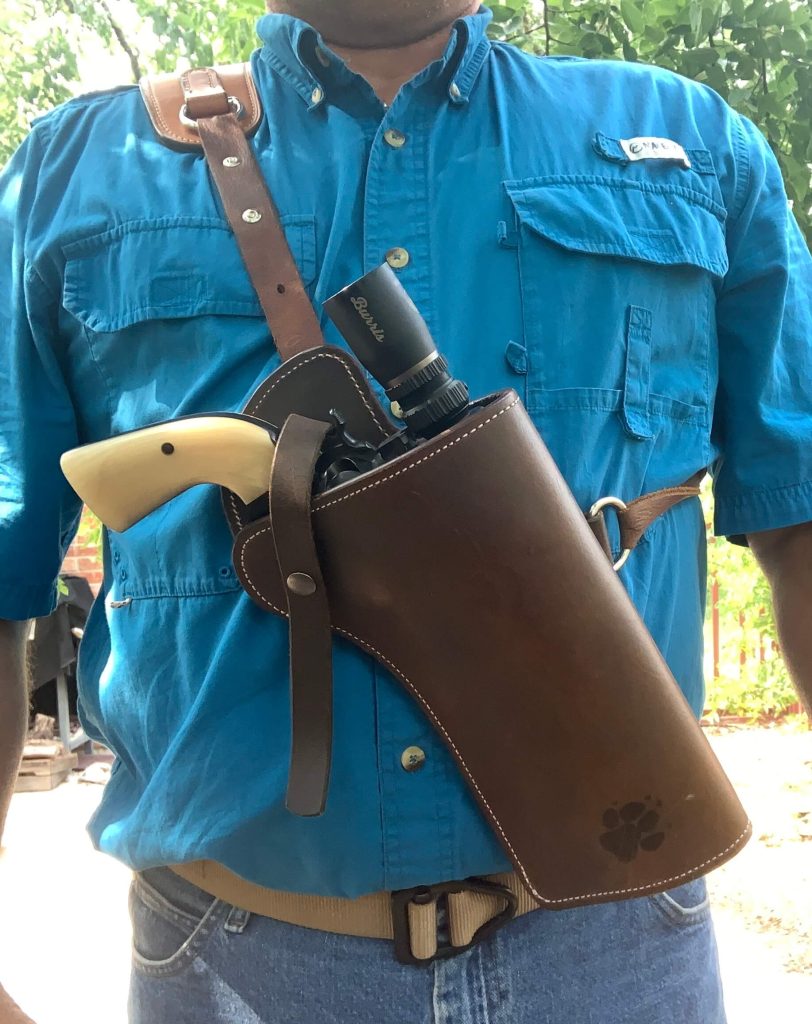
Bandoleer Vs Chest Rig
My primary hunting gun is a handgun. I carry it in a chest rig or a Bandoleer-style holster. The main difference between a bandoleer rig and a chest rig is the angle at which the gun is kept while wearing it. As well as the number of straps used to secure it in place. The bandoleer rig is more vertical in aspect and typically uses two straps, the chest rig is more horizontal and uses three.
My normal hunting handguns will most likely have barrels longer than 7 inches, this makes vertical carry more logical to me for them. The chest rig is a good choice for shorter-barreled guns, ones used for defensive carry. My 3” S&W 629 gets carried in a chest rig. As does a 3.5” barreled Ruger 45Colt, and a 5.5” Ruger/Gallagher 500maximum. The holster chosen for those guns is a Diamond D chest rig, with a few different holsters for the same chest rig.
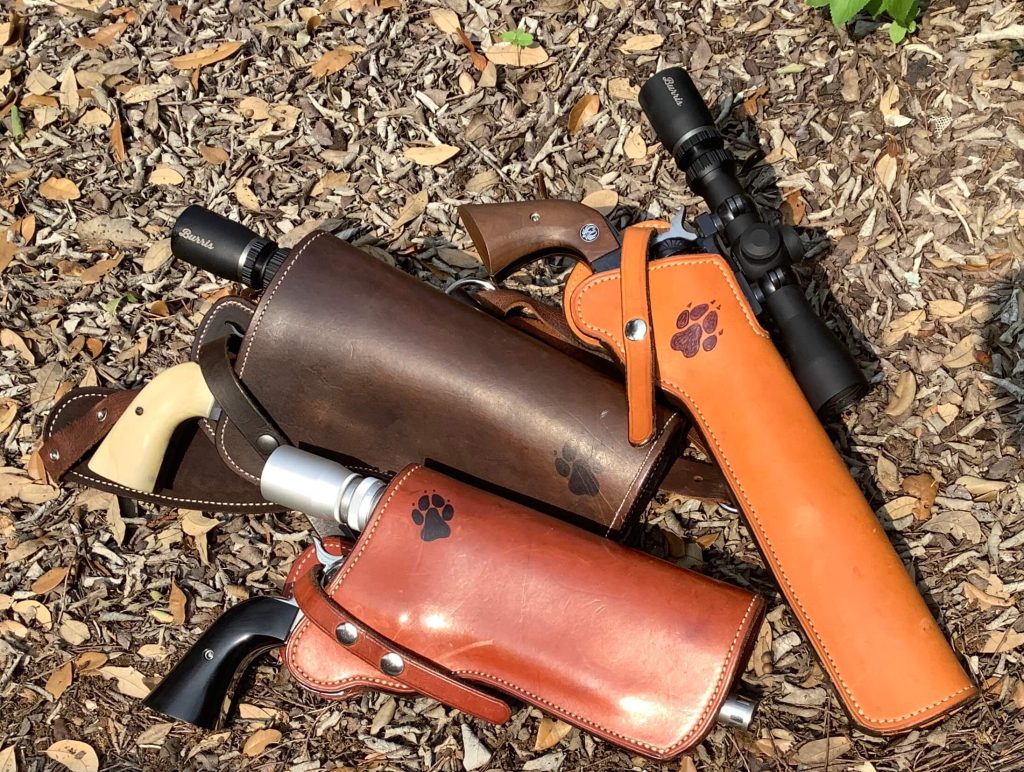
Bandoleer – A Favorite for longer barrels
A bandoleer style holster is my favorite style of carry for my hunting handguns with barrels of 7.5” or longer. I carry a S&W 657 with 7.5” barrel, a Freedom Arms/MNP Stalker with 8.375” barrel, a Ruger/Huntington 414SM with 7.5” barrel, a Ruger 357 maximum with 10.5” barrel, and a Ruger SBH Hunter with 7.5” barrel in a Barranti bandoleer holster system called the NW Hunter. The Barranti system allows me to use a few different holsters by Barranti, an NW or a NE hunter holster. The difference is that one completely covers the optic on the gun and one does not. The NE Hunter holster will allow me to slip my FA, S&W, and Ruger SBH Hunter into the same holster.
My NE Hunter holster is made for my 10.5” Ruger Maximum. It is cut for the scope and mount to be outside of the holster. I liked the holster system tremendously, and when I needed a custom holster made for a new hunting gun I had one made to utilize the Barranti system. I, however, went with a local leathersmith due to my need requiring a quick turnaround, that leathersmith was Backcountry Leather Goods of New Braunfels, Texas.
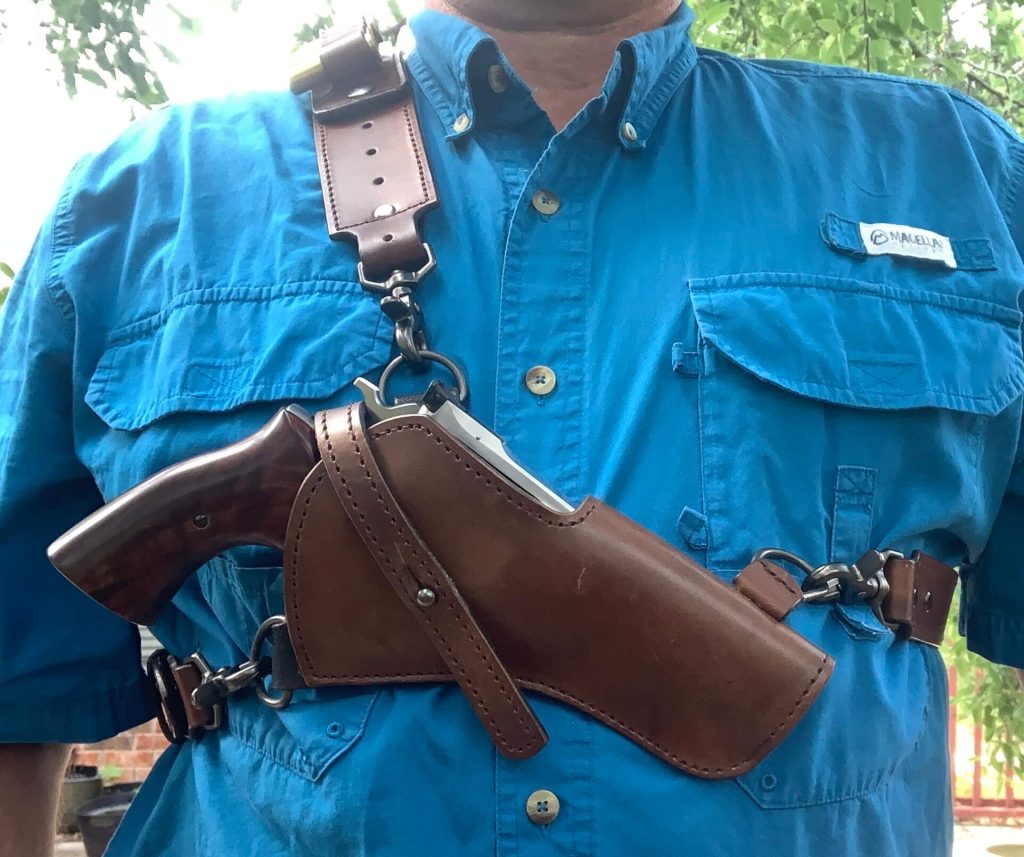
A Good Experience
Randy Miller’s ability to understand my requirements and desires and his proximity to me permitted a quick stop at his shop. Allowing me to get a perfect fit and rapid turnaround for an unusual frame size. This type of service and product caused me to order one of his chest rigs for my Bowen Super Redhawk. Randy understands the desires of handgun hunters because he is one. So when I asked for the gun to ride high on the chest to avoid binoculars, he understood exactly what I was looking for. He makes his rig to hold a few extra rounds and utilizes excellent hardware.
The fit and comfort of the rig are tremendous, I’ve worn it all day long and under a jacket with no pinch points or hot spots. The weight of the gun is carried evenly over the torso. I am able to order it with a very secure retention strap.
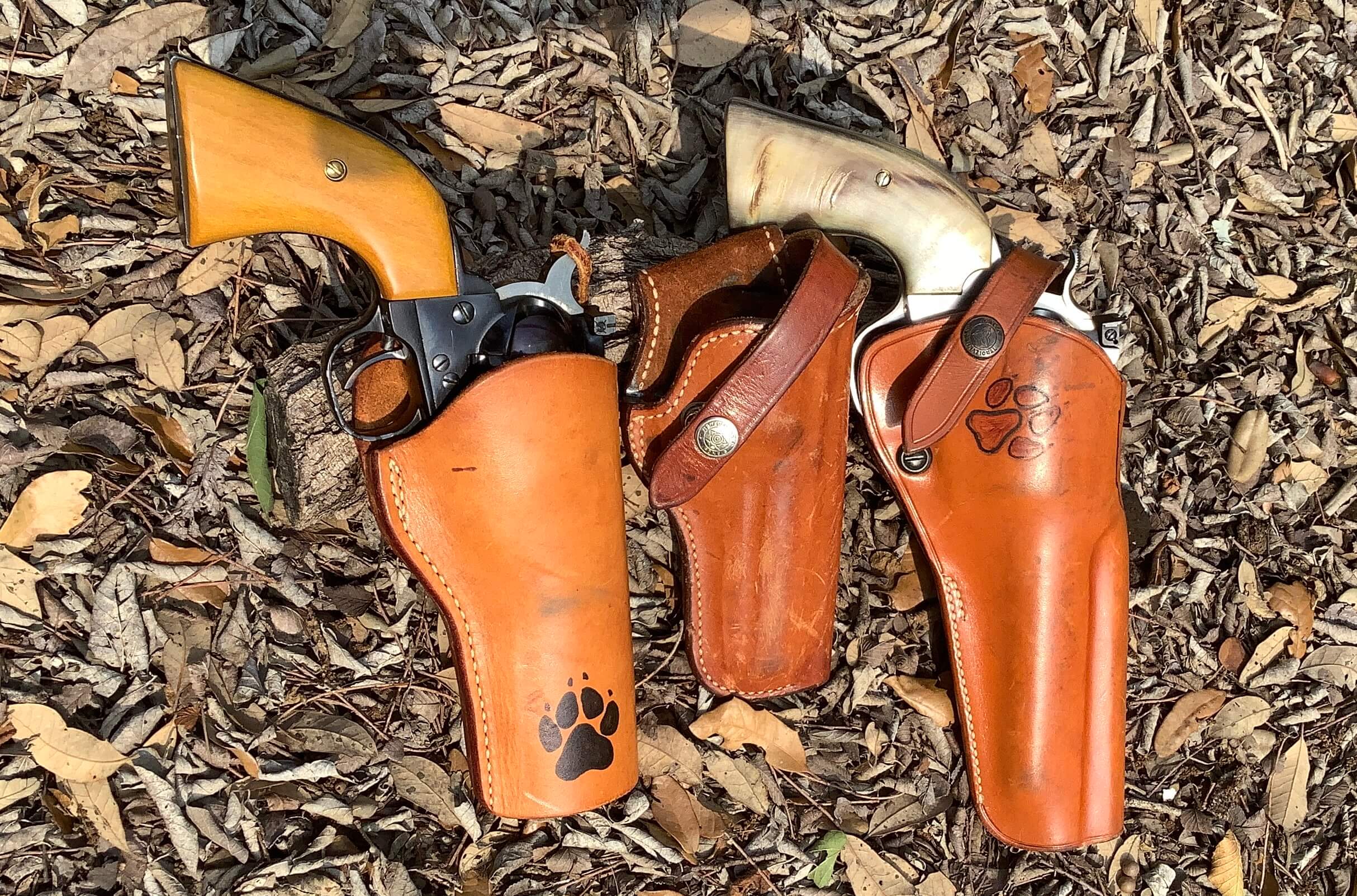
If you have paid attention to the article so far you should have noticed that all the leather makers mentioned are not inexpensive. This is definitely an area where you get what you pay for, and you should pay once and be completely happy with the product. Cheap leather or holsters are just that “Cheap” I personally do not earn enough money to afford cheap gear. I actually lost a nice S&W 2.5” model 29 while tracking a wounded pig in the dark to a poor-quality holster, luckily I was able to retrace my steps back in the dark and found it.
A Quality Holster Lasts A Lifetime
I still have that holster as a reminder to never buy cheap gear again. I much prefer to purchase gear once and never need to purchase it again. There are more good quality makers than I mentioned, there are also many many others that offer poor products at what appear to be great prices. I’ve ordered from some of them once and returned the product immediately upon seeing it. Some of the mass producers make decent gear Galco, Bianchi, and El Paso Saddlery, have been in business for a long time because they make decent gear.
I never realized how important top-quality leather gear or holsters were until I needed to wear a gun around all day long, riding horses, doing chores, hunting wearing a pack, sitting in a vehicle, crawling through brush, and competing while performing rough and tumble activities. Those that make it realize that once you purchase their product you might never need to purchase another product from them because it could easily outlast the purchaser.
SEE MORE: Biden Administration Wants to Ignore Science to Push Traditional Ammo Bans
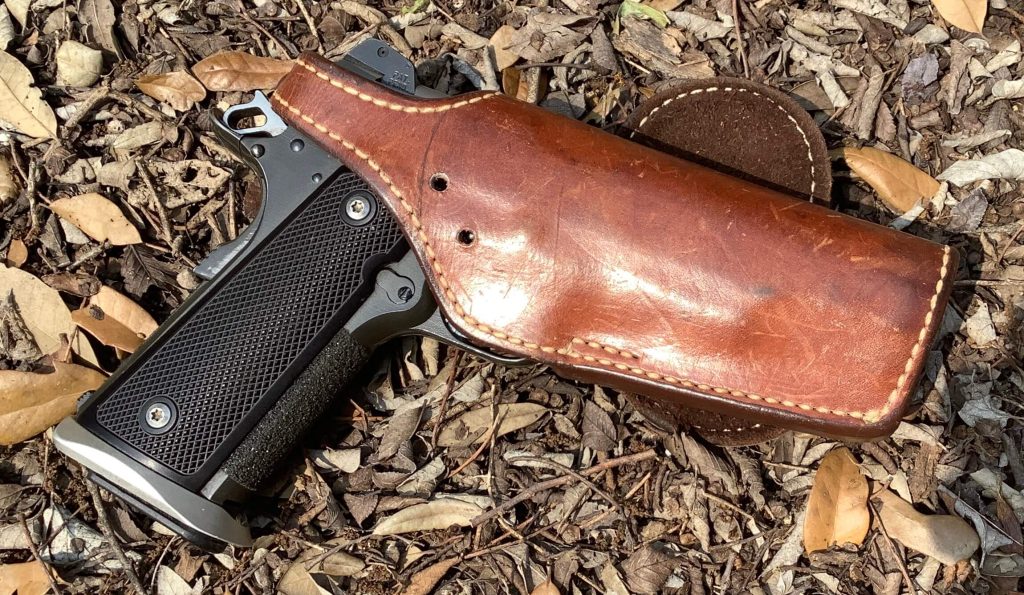
Links
Backcountry Leather Goods on FB, 830-832-6256, backcountryleather@att.net
Barranti Leather, barrantileather.com
Bianchi Leather, bianchileather.com
Bladetech, blade-tech.com
Bullard Leather, bullardleather.com
Diamond D Leather, diamonddcustomleather.com
El Paso Saddlery, epsaddlery.com
Galco Leather, galcogunleather.com
Milt Sparks Leather, miltsparks.com
Simply Rugged holsters, simplyrugged.com
Thad Rybka
